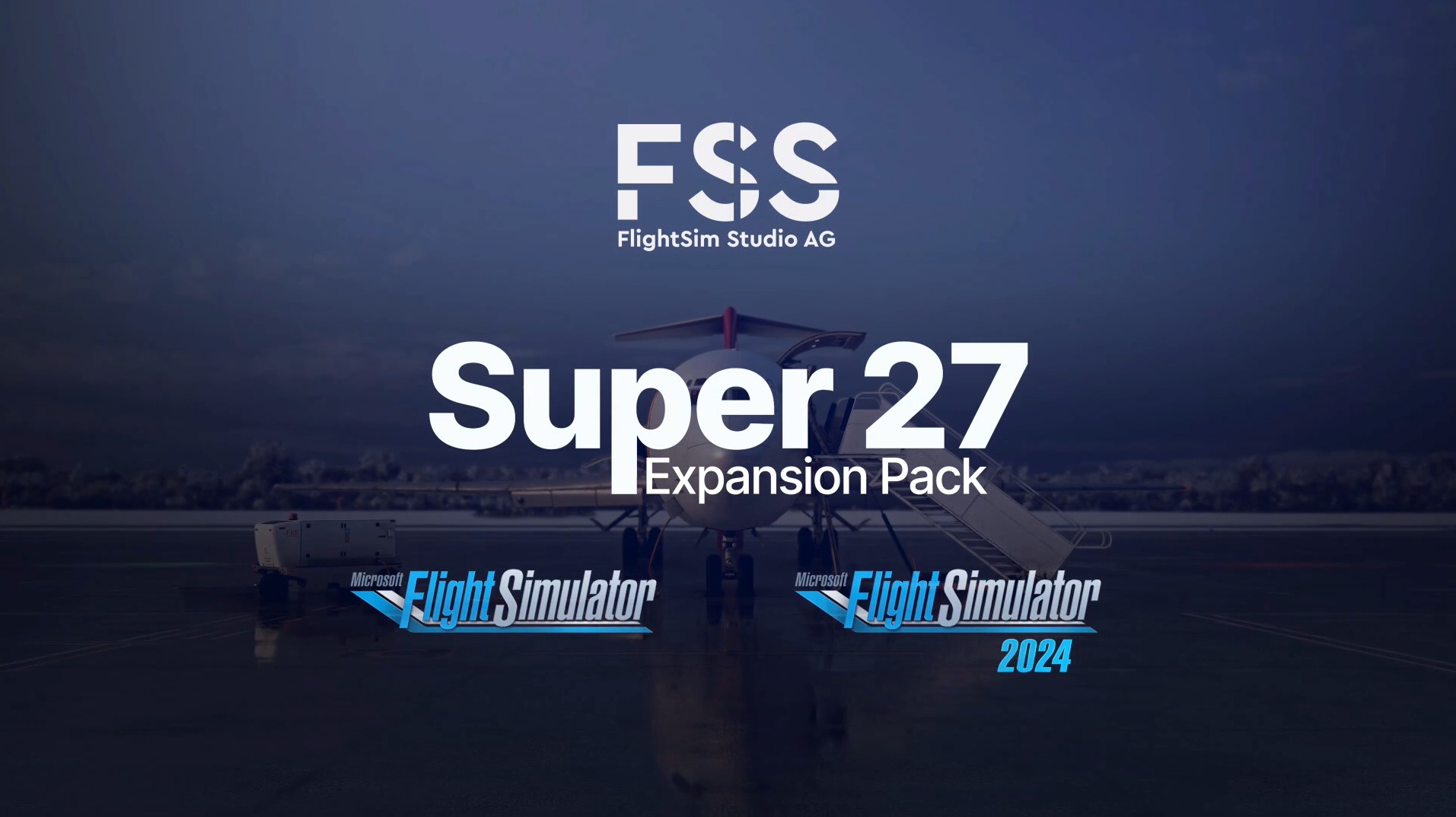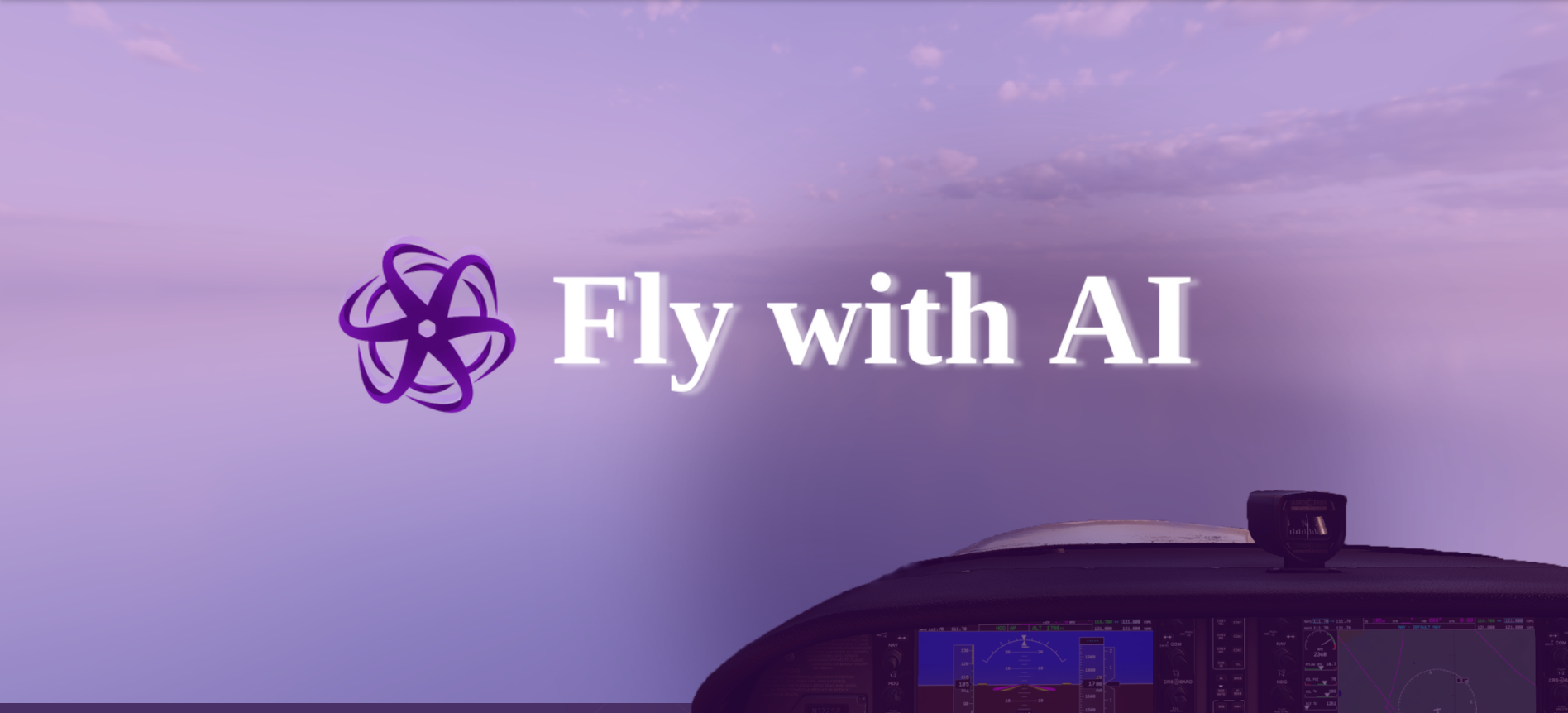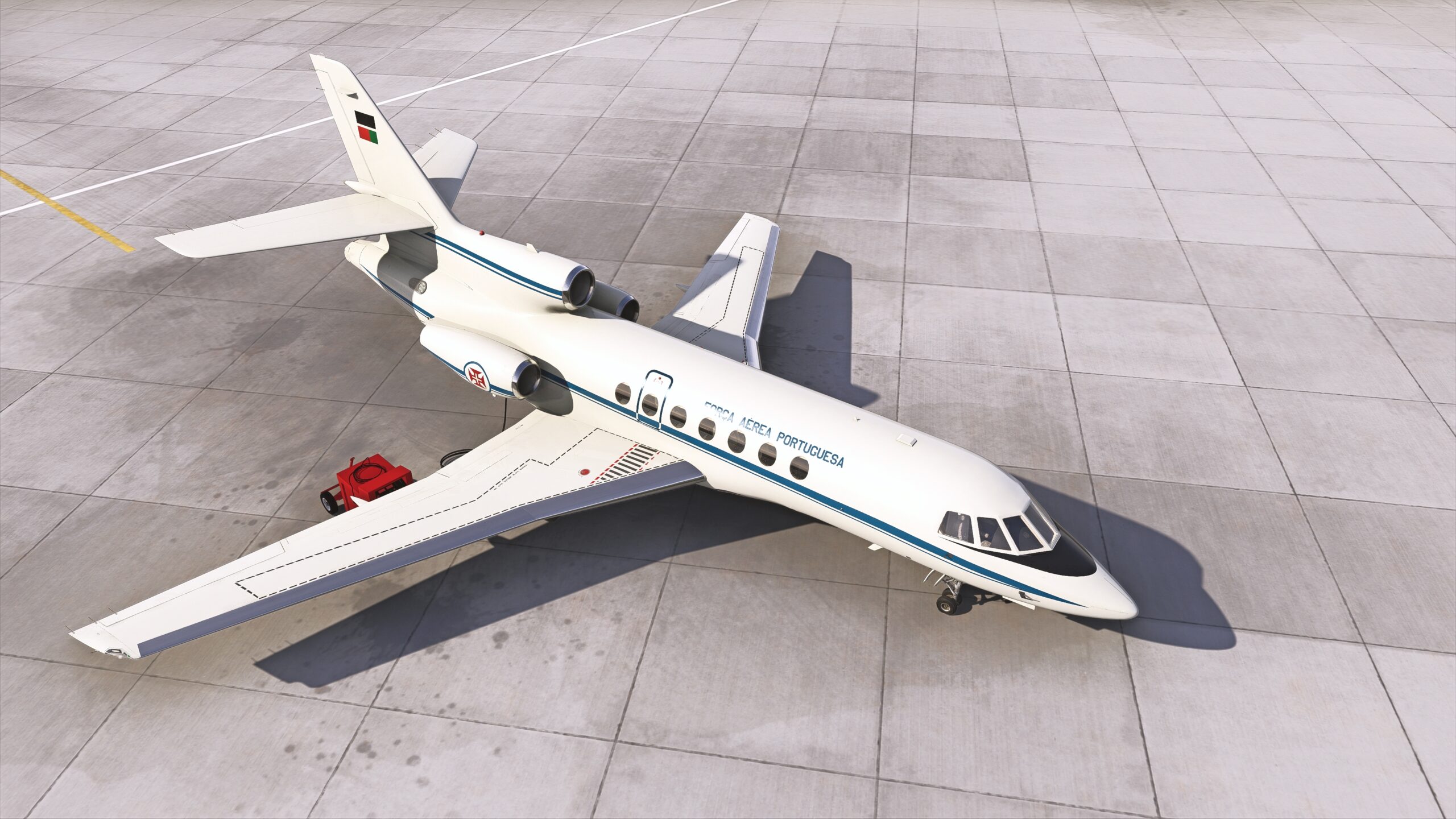It’s a common theme in the exciting hobby of flight simulation that third-party developers step in to fill the gaps left in official software. While the best flight simulators have generally gotten the “flying” down to a science, the ancillary aspects of putting yourself in the pilot’s seat often get less attention. In Microsoft Flight Simulator, the Air Traffic Control (ATC) system has always been sub-par, failing to accurately simulate such an important part of a pilot’s day-to-day duties.
That is where the third parties come riding in to close the gap and provide solutions for realism-minded simmers to enjoy the simulated communication as much as the flight. FSHud – Air Traffic Control is one such popular add-on. First developed for P3D, FSHud – Air Traffic Control (Hereafter “FSHud”) has found a new home rectifying the shortcomings of MSFS’ default ATC systems. With a massive update to version 1.3 on the horizon, the developers of FSHud sat down with FSNews.eu to detail the challenging world of simulated ATC and how Version 1.3 plans to provide pilots with a comprehensive, realistic ATC system for IFR operations.
The AI Traffic problem
When developing an ATC add-on for a simulator it is important to keep in mind the purpose of Air Traffic Control. To quote directly from the Wikipedia definition of Air Traffic Control: “The primary purpose of ATC worldwide is to prevent collisions, organize and expedite the flow of air traffic, and provide information and other support for pilots.” It is easy to conceptualize this from a real-world perspective, and in practice, ATC naturally functions as the “operational authority” in aviation. If you listen to ATC recordings, you can understand what they are doing: ensuring the safe and expeditious operation of air traffic via radio communications.
“But the program that simulates ‘ATC’ by definition will require breaking down those core capabilities,” says the team behind FSHud. FSHud’s current implementation simulates IFR communications (With VFR planned for Version 1.4), where the discrepancy between what is expected of ATC vs. what MSFS is currently capable of is thrown into greater relief. In an environment where simulated aircraft do not intuitively understand verbal instructions, an ATC add-on must be able to more strongly direct aircraft, as well as convey instructions to a human user in a realistic manner. Any accurate simulation of ATC must therefore not just be able to talk – it needs to interact with the AI traffic function of its host simulator in a very direct way.

A “Flock of Birds”
Historically, this has been a great challenge, especially for Microsoft Flight Simulator’s default ATC implementation. “In legacy ATC and AI traffic management,” say the FSHud developers, “Users get the feeling that it is ‘me the user,’ and AI traffic is some kind of ‘flock of birds’ that should somehow move and behave normally, without disturbing me.” When a simulator’s ATC cannot both issue clear instructions to the user and effectively direct AI aircraft, you get a situation that is all too common, at least in MSFS: the “Flock of Birds,” a disjointed bundle of airliners flying to who-knows-where doing god-knows-what, circling aimlessly over the airport.
“It’s [like] Independence Day or [a] demonstration show,” say the developers. It’s no wonder then that AI Traffic management is a feature that has taken center stage in the upcoming version 1.3 update. “It is wrong to separate ATC from AI Traffic Management – it is one piece,” the devs stated, “Because of development complexity, it was separated for years.” FSHud aims to rectify this disconnect by providing an ATC add-on that handles both user and AI traffic in the same way, on a level playing field.
FSHud’s “Mini Autopilot”
Compounding the issues for Microsoft Flight Simulator specifically is the difficulty of getting AI traffic to actually follow instructions. While earlier versions could direct AI traffic, there was little guarantee that the aircraft would actually go where FSHud told them to – failing in their goal to achieve consistency with detailed instructions. “This is a famous problem,” FSHud’s developers told us, “We started this project in P3D, where [directing AI aircraft] worked properly in P3D’s SDK.”
This is an issue encountered by other AI traffic add-ons, such as AIG, Simple Traffic, or FSLTL. Often, no matter how believable the volume or type of injected traffic is, MSFS’s AI traffic “brain” cannot effectively direct them – resulting in the “flock of birds.” Rather than rely on MSFS’s traffic system then, FSHud is forging its own path with Version 1.3. “In order to force AI Aircraft to move properly, […] we had to implement a low-level mini-autopilot that controls AI aircraft directly.” FSHud Version 1.3 aims to do this without a noticeable performance impact.


This has not been a trivial task for FSHud, requiring active development on the AI movement API since at least November of 2022. “We were not prepared for this,” stated the developers, “At the end of the day, we are an ATC program – not an aircraft gauge or autopilot program.” But, they say, the development time was worth it. They are very pleased with Version 1.3’s behavior, as are many users currently enrolled in its beta – currently available to all FSHud owners. Delivering consistent and believable interaction with ATC and AI traffic has required completely new approaches, and the FSHud developers state that “In Version 1.3, we have finally achieved this by providing complete and stable movement both airborne and on the ground, including proper and better landings!”
Wide compatibility
Like Version 1.2, the upcoming FSHud Version 1.3 will be compatible with existing AI traffic add-ons. The popular freeware FSLTL in particular already utilizes FSHud’s API to inject AI traffic and schedules, which are then controlled and directed by the application. FSHud is also able to read AIG Traffic Database files, as well as native BGL files, providing wide compatibility with both default and add-on traffic. After all, according to the developers, all that AI traffic add-ons do is provide aircraft, schedules, and flights – and it is up to the ATC system to make the decision as to how this traffic is routed. With the improvements made in Version 1.3, AI Traffic in MSFS with FSHud should behave as intelligently – or better – than we human sim pilots when listening to ATC.
A clear turn of phrase
The inadequacies of MSFS’ default ATC don’t stop with AI traffic. Nonsensical phraseology and instructions have been a long-standing complaint of MSFS pilots, directing users to climb and descend randomly, and often providing the impression that it has very little clue as to what the user is actually doing. Of course, for pilots trying to simulate a full IFR experience, this can be immersion-breaking – as are the issues the default ATC has with things like runway selection and flight clearances. This can result in truly astonishing sights in the simulator, such as heavy 777s taking off directly into mountains, with a tailwind, when even the in-sim ATIS provides different runways to use. While many users turn to a multiplayer ATC network like IVAO or VATSIM (Or, in the past, SATCO), FSHud aims to provide a similarly rich experience for pilots who prefer to fly offline.

That means clamping down on these unrealistic behaviors. This process starts on the ground: Clearance, taxi, takeoffs, and landings must be handled correctly and with attention paid to real-world operational norms. FSHud’s developers are keeping these norms in mind for improvements in Version 1.3. “For example, at KLAX, outer runways are used for landings and inner runways for takeoffs.” While the default ATC does not understand this, “FSHud handles it properly, and not only at KLAX. [FSHud] takes into account several things, not only wind components, to make things a bit closer to reality.” In Version 1.3, complex taxi and hold instructions will also be supported, with the new mini-autopilot system ensuring that AI traffic is just as attentive as you are.
This requires great attention to clearances and phraseology, which have been improved in FSHud version 1.3. “In the real world – when requesting clearance – ATC gives you many parameters, including departure procedure SID – such a thing doesn’t exist in default MSFS ATC,” note FSHud’s developers. Indeed the process of receiving clearances in any phase of the flight is probably the most common gripe with the default ATC. During departure and arrival, “ATC should inform you about the expected Procedure[s], […] and give vertical instructions and vectors when necessary.” FSHud Version 1.3 claims significant improvements in this regard and is now able to both vector aircraft properly as well as provide much more realistic climb and descent clearances – following charted procedures and better vertical guidance.
The future of FSHud
Significant improvements to AI Traffic and phraseology aren’t the only things in FSHud’s hangar. The full list of anticipated features for Version 1.3 can be found here, on FSHud’s forums. FSHud users have been delighted to see improvements to voices on the list of upgrades. While the traffic and phraseology have taken center stage, smaller improvements such as better boundary zone behavior are present, as well as much-requested quality of life changes. VFR ATC support, as well as voice recognition, workarounds for encrypted scenery, and better VR support, are all currently planned for Version 1.4.
Overall, FSHud’s developers tell us, it’s all about providing the most realistic offline ATC experience available in MSFS. Though they are a small team, they are always active on their forums as well as 3rd-party forums such as AVSIM and MSFS Forums. Version 1.3 is currently undergoing an extensive beta phase to gather feedback from FSHud’s users. Currently, the team has not announced a release date, preferring to hold the release until the product is stable. The rise in popularity of flight simming (something we discussed in our MSFS Marketplace article) has made it possible for the FSHud team to be conservative with their release schedule. “Previously, when things just started and product popularity and sales [were] still under question – we could afford to release something that may be not 100% working only to keep this project alive and inject it somehow – now it’s completely time for pure stability [sic].”

(Image source: FSHud Facebook)
ChatGPT and language models – AI for AI?
Large language models such as OpenAI’s ChatGPT have made headlines recently for their ability to replicate human speech and writing patterns with astonishing accuracy, as well as the appearance of logical thought. Immediately, flight simmers began to speculate and test the boundaries of ChatGPT in the role of sim ATC. In parting, we asked the FSHud team about the potential for AI Large Language Models in future versions of FSHud and ATC add-ons in general. They stated that while they have “several ideas” of how it can be used, Air Traffic Control actually does not lend itself to AI language models as readily as some might think.
“ATC Phraseology is [an] exact science with exact syntax,” stated the FSHud developers, which “Has full alignment with classic computer science.” Indeed, the execution of Air Traffic Control’s main goals and principles are built on rigid procedure with exact phraseology, assuming it is followed. FSHud’s developers state that competent offline ATC can be accomplished through traditional methods and that using ChatGPT would in many cases be “complete overkill.” However, it is still possible that AI language models could be included in some respect in future versions – but until something concrete is announced, according to the developers, “let’s hope and live until those days.”
Thank you very much to the developers of FSHud – Air Traffic Control for taking the time to answer questions and detail the challenges and process of developing such an add-on. FSHud – Air Traffic Control is currently available for purchase through Flight1 here. When FSHud – Air Traffic Control Version 1.3 sees its full release, you can expect a full review right here on FSNews.eu – so stay tuned!
Feel free to join our Discord server to share your feedback on the article, screenshots from your flights or just chat with the rest of the team and the community. Click here to join the server.











